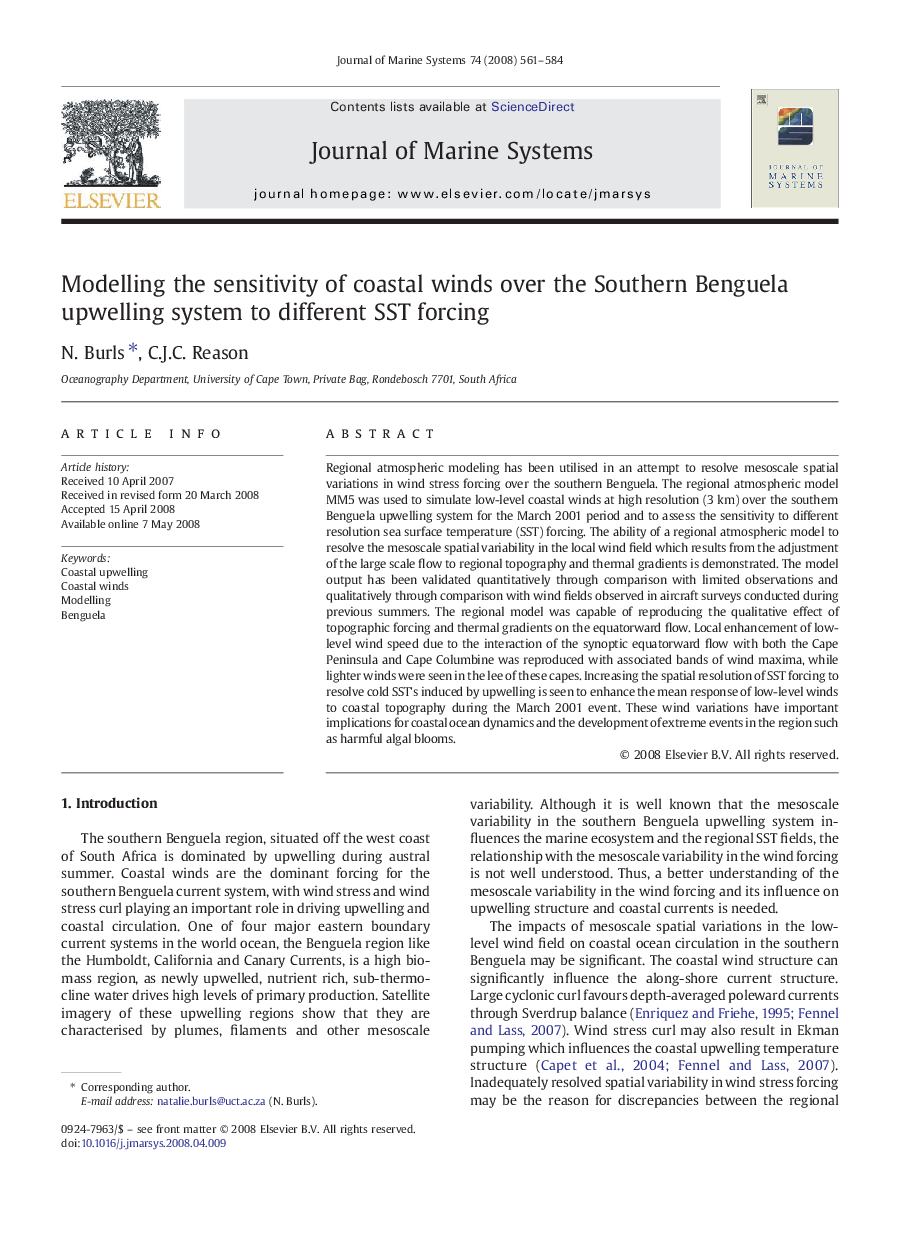| Article ID | Journal | Published Year | Pages | File Type |
|---|---|---|---|---|
| 4549020 | Journal of Marine Systems | 2008 | 24 Pages |
Regional atmospheric modeling has been utilised in an attempt to resolve mesoscale spatial variations in wind stress forcing over the southern Benguela. The regional atmospheric model MM5 was used to simulate low-level coastal winds at high resolution (3 km) over the southern Benguela upwelling system for the March 2001 period and to assess the sensitivity to different resolution sea surface temperature (SST) forcing. The ability of a regional atmospheric model to resolve the mesoscale spatial variability in the local wind field which results from the adjustment of the large scale flow to regional topography and thermal gradients is demonstrated. The model output has been validated quantitatively through comparison with limited observations and qualitatively through comparison with wind fields observed in aircraft surveys conducted during previous summers. The regional model was capable of reproducing the qualitative effect of topographic forcing and thermal gradients on the equatorward flow. Local enhancement of low-level wind speed due to the interaction of the synoptic equatorward flow with both the Cape Peninsula and Cape Columbine was reproduced with associated bands of wind maxima, while lighter winds were seen in the lee of these capes. Increasing the spatial resolution of SST forcing to resolve cold SST's induced by upwelling is seen to enhance the mean response of low-level winds to coastal topography during the March 2001 event. These wind variations have important implications for coastal ocean dynamics and the development of extreme events in the region such as harmful algal blooms.
